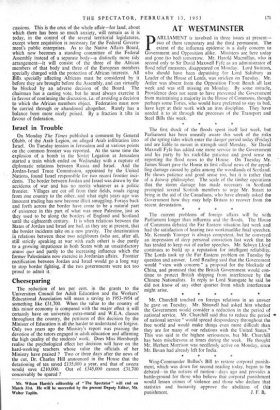Report on Federation
The White Paper on Central African Federation, published since the last issue of The Spectator went to press, adds little to what was known or surmised already about the results of the London.Conference. The case for federation, as against full amalgamation, of the three territories concerned, South Rhodesia, Northern Rhodesia and Nyasaland, on the one hand and the present loose association (which is ill calculated to attract European capital for the extensive development needed) is demonstrated convincingly. But the one-chamber govern- ment contemplated for the federation is to contain six Africans against twenty Europeans, a proposal which can hardly be expected to rouse the enthusiasm of Africans. The safeguard for African interests in the form of a Native Affairs Board has on the whole been strengthened in the course of the dis- cussions. This is the crux of the whole affair—for land, about which there has been so much anxiety, will remain as it is today, in the control of the several territorial legislatures, except where requisition is necessary for the Federal Govern- ment's public enterprises. As to the Native Affairs Board, which now becomes a standing committee of the Federal Assembly instead of a separate body—a distinctly more tidy arrangement—it will consist of the three of the African members of that body and three of the European members specially charged with the protection of African interests. All Bills specially affecting Africans must be considered by it before they are brought before the Assembly, and can virtually be blocked by an adverse decision of the Board. The chairman has a casting vote, but he must always exercise it in favour of continuing the discussion, i.e. of avoiding a decision to which the African members object. Federation must now be carried through or abandoned altogether. Rarely has a balance been more nicely poised. By a fraction it tilts in favour. of federation.



































 Previous page
Previous page